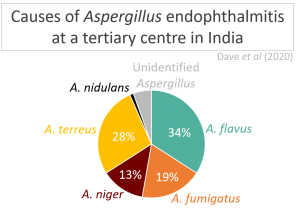Submitted by Aspergillus Administrator on 4 June 2010
We have found a report of 2 patients suffering from the latest pandemic flu virus (H1N1) in 2009 who went on to develop invasive aspergillosis.
Both patients were well and had normal immune systems as far as is known, so would not normally have been at risk from invasive aspergillosis.
However, influenza is known to cause problems with the infected persons’ immune system and can cause disruption of the tiny hairs on the surface of our lungs (cilia) that normally push infecting objects like mould spores out of our lungs. These patients can be thus primed for infection, but this isn’t thought to be enough to render them at risk from invasive aspergillosis, there has to be a second wave of attack to allow aspergillus to penetrate our immune systems.
In both cases mentioned in the paper the patient was suffering breathing difficulties and was given steroid therapy to enable stabilization of their breathing. Unfortunately this also renders the patient a little more susceptible to infection as steroids can inhibit the immune system, and this may well have contributed to the outcome.
Influenza is not therefore the cause of invasive aspergillosis in these cases but if the patient is also receiving steroids then the authors of the paper conclude that the patient should be treated as at risk from invasive aspergillosis.
News archives
-
Title
Date



